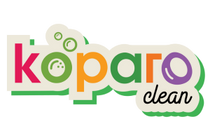
Behind the ‘safedi’ promise: Know what’s inside the popular detergents
Ingredients of Washing Detergents
- Cleaning Agents (Anionic And Nonionic Surfactants, Enzymes)
- Water Softeners (sodium Carbonate And Sodium Aluminosilicate)
- Fabric Whitener
- Sodium Perborate
- Anti-redeposition Agent
- Perfume
- Washer Protection Agent (Sodium Silicate)
- Processing Aids (Sodium Sulfate)
That sounds like greek to most unless you are a chemical engineer or just obsessed with laundry detergent ingredients (like us). So here’s a crash course.
Anti-redeposition Agent
Anti-redeposition agents are common additives in laundry detergents that prevent dirt and soil from settling back onto clothes during the washing process. One of the primary concerns with anti-redeposition agents is their potential to cause skin irritation, cancer, asthma and allergic reactions. This is because these agents are often made from synthetic materials, such as polyvinyl alcohol, which can be harsh on sensitive skin. Additionally, the particles in anti-redeposition agents can become embedded in cloth fibers and irritate the skin even after the clothes have been washed.
Sodium Sulfate
Sodium sulfate is a commonly used compound in various industries, but exposure to large quantities can have harmful effects. It can cause skin, eye, and respiratory irritation, dehydration, gastrointestinal issues, and kidney damage. Additionally, if it is released into waterways, it can have a negative impact on the environment by causing oxygen depletion and harming aquatic life. It's important to handle sodium sulfate with care and to seek medical attention if exposure occurs.

Sodium Perborate
Sodium perborate, a white crystalline powder, is used in various household applications as a bleach, disinfectant, and laundry detergent booster. Exposure to large amounts or over prolonged periods can cause harmful effects. It can irritate the skin, causing dryness, redness, and itching. Contact with the eyes can cause irritation, redness, tearing, and permanent vision loss. Inhaling sodium perborate can lead to respiratory problems such as coughing, wheezing, and shortness of breath. Ingesting it can cause gastrointestinal problems, including nausea, vomiting, diarrhoea, and in severe cases, even death.
Fabric Whiteners
The production and use of fabric whiteners contribute to air and water pollution, which can have negative impacts on human health. Exposure to fabric whiteners can cause skin and eye irritation and respiratory problems, especially for people with asthma or other respiratory conditions. Moreover, fabric whiteners can weaken the fibers of clothing over time, leading to the need for more frequent replacement and ultimately contributing to textile waste.

Alternative Solution
Next time you do your laundry, take a moment to think about the impact of your detergent on your health and the environment. By making a small change and switching to a detergent brand like Koparo Laundry Liquid, you can make a big difference in the world we live in.
Our formula is made without adding phosphates, optical brighteners, and bleach, making it safe for your health and the environment. We use plant-based surfactants and mild hypoallergenic fragrances, ensuring that our product is gentle on your skin and leaves your clothes smelling fresh and clean.
References
- https://www.ecos.com/live-cleaner/7-common-toxins-found-in-laundry-detergent/
- https://www.sciencedirect.com/topics/nursing-and-health-professions/sodium-sulfate
- https://www.sciencedirect.com/topics/immunology-and-microbiology/sodium-perborate
- https://www.ewg.org/guides/substance_groups/87-Antiredepositionagent/
Give Koparo Laundry Liquid a try and join the movement towards a cleaner, safer, and more sustainable world that’s gentle on you too!









